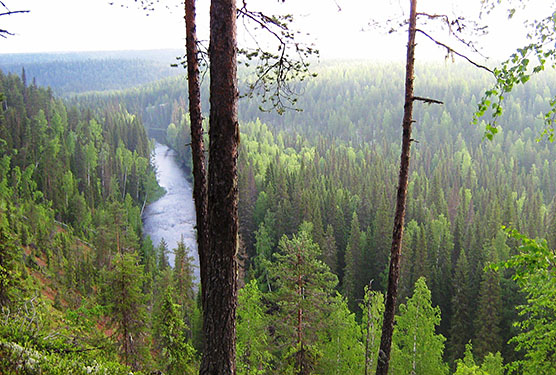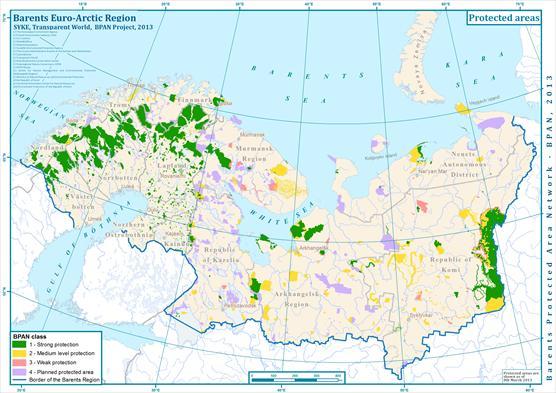Press release 2013-12-11 at 12:00
Coordinated by the Finnish Environment Institute, the Barents Protected Area Network (BPAN) project involved an analysis of the current status of and gaps in the network of protected areas in the Barents Region. Based on the project's results, a set of joint recommendations has been drawn up for the Barents Region on how the protected area network should be developed in order to secure boreal biodiversity and ecosystem services, and adaptation to climate change. These jointly created recommendations concern the northern areas of Finland, Sweden, Norway and Northwest Russia.

They seek to conserve sufficient pristine nature in order to bring a halt to the destruction of species and ecosystems, in line with goals of the UN Convention on Biological Diversity. The network of protected areas will be developed across national boundaries, enabling joint action by Barents Region governments to conserve the representativeness of northern biotypes and the connectivity of protected areas. It is recommended that protected areas will be established for remaining old-growth forests and wetlands.
Five valuable natural areas in northwest Russia have been designated pilot sites for the BPAN project. These include Europe's largest old-growth forest wilderness in the Dvina and Pinega watershed and the old-growth, intact pine forest of the Murmansk Region. The objective is to conserve functional ecological corridors between Finland and Russia.
Constructive cooperation
The BPAN project has been funded by the Nordic Council of Ministers, the Ministries of the Environment of Finland, Sweden and Norway, and the Barents Sea office of WWF Russia. Protected area analyses for the project were conducted through cooperation between Metsähallitus Natural Heritage Services, research and scientific institutes of the participant countries, and nature conservation organisations.
Joint nature conservation work coordinated by the Finnish Environment Institute was begun in 1997. Over the years, a large amount of information has been generated on valuable natural areas and support has been provided for their protection. Such areas include the Onezhskoye Pomorye National Park on the Onega Peninsula in the Arkhangelsk Region, the Kalevala National Park in the Republic of Karelia and the Lapland Forest Nature Reserve in the Murmansk Region. The most valuable high conservation value areas, identified in the analysis of the protected area network of Northwest Russia (Gap analysis), which was completed in 2011, are now included in the regional and national nature conservation plans.
Accordingly, the results of the Barents Protected Area Network project will be presented internationally, nationally and regionally in 2014. They will be presented at the World Parks Congress of the International Union for Conservation of Nature (IUCN) and the Conference of Parties (COP) to the Convention on Biological Diversity, as well as at various events held in the Barents Region.
Environment ministers of the Barents Region highlighted importance for conservation of intact forests and mires in their meeting on 5th December. Planned protected areas included in the national and regional nature conservation plans should be established as statutory protected areas. Environmental ministers of the Barents Region urged conservation actors in the area to continue their constructive cooperation.

The protected area network cower 13.2 % of Barents region. On the map, established protected areas are divided into three categories based on the degree of protection they have been accorded. If all the planned protected areas will be protected in the Northwest Russian the total protected area network will be cower 16.6 % Barents region.
Further information
Anna Kuhmonen, Senior Coordinator, Finnish Environment Institute,
tel. +358 (0)295 251 322 firstname.lastname@ymparisto.fi,
Tapio Lindholm, Leading Researcher, Finnish Environment Institute,
tel. +358 (0)295 251 379, firstname.lastname@ymparisto.fi
Links
Photos for media
Pilot site of the BPAN project in the Arkhangelsk Region in Northwest Russia.jpg Picture by Artem Stolpovsky
Boreal coniferous forest in Finnish Lapland.jpg Picture by Esa Nikunen.
Map of the Barents protected area network.jpg